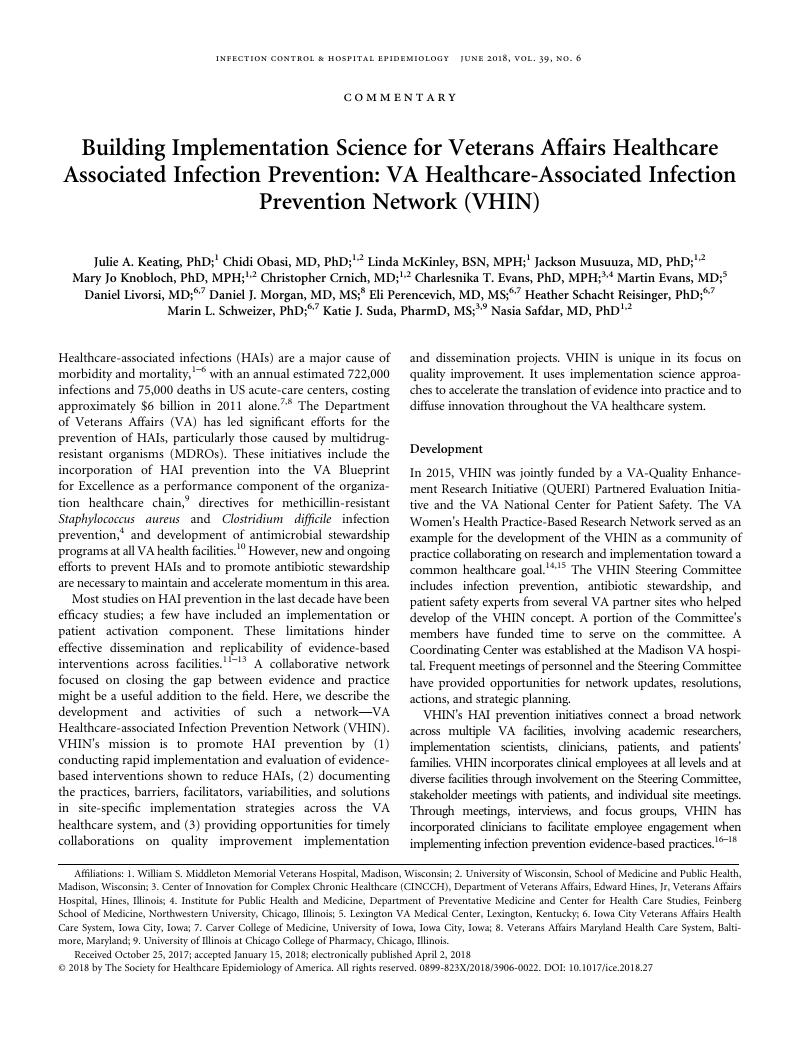Crossref Citations
This article has been cited by the following publications. This list is generated based on data provided by Crossref.
Sreeramoju, Pranavi
2019.
Recent advances in understanding the epidemiology of healthcare-associated infections.
F1000Research,
Vol. 8,
Issue. ,
p.
106.
Musuuza, Jackson S.
McKinley, Linda
Keating, Julie A.
Obasi, Chidi
Knobloch, Mary Jo
Crnich, Christopher
Evans, Charlesnika T.
Evans, Martin E.
Livorsi, Daniel
Morgan, Daniel J.
Perencevich, Eli N.
Reisinger, Heather Schacht
Schweizer, Marin L.
Suda, Katie J.
Simbartl, Loretta A.
and
Safdar, Nasia
2020.
Correlation of prevention practices with rates of health care-associated Clostridioides difficile infection.
Infection Control & Hospital Epidemiology,
Vol. 41,
Issue. 1,
p.
52.
Hockett Sherlock, Stacey
Goedken, Cassie Cunningham
Balkenende, Erin C.
Dukes, Kimberly C.
Perencevich, Eli N.
Reisinger, Heather Schacht
Forrest, Graeme N.
Pfeiffer, Christopher D.
West, Katelyn A.
and
Schweizer, Marin
2022.
Strategies for the implementation of a nasal decolonization intervention to prevent surgical site infections within the Veterans Health Administration.
Frontiers in Health Services,
Vol. 2,
Issue. ,
McKinley, L.
Goedken, C.C.
Balkenende, E.
Clore, G.
Hockett, Sherlock S.
Bartel, R.
Bradley, S.
Judd, J.
Lyons, Goedken
Rock, C.
Rubin, M.
Shaughnessy, C.
Reisinger, H.S.
Perencevich, E.
and
Safdar, N.
2023.
Evaluation of daily environmental cleaning and disinfection practices in veterans affairs acute and long-term care facilities: A mixed methods study.
American Journal of Infection Control,
Vol. 51,
Issue. 2,
p.
205.
McKinley, Linda L.
Goedken, Cassie C.
Balkenende, Erin C.
Hockett Sherlock, Stacey M.
Knobloch, Mary Jo
Bartel, Rosie
Perencevich, Eli N.
Reisinger, Heather S.
and
Safdar, Nasia
2024.
Using a human-factors engineering approach to evaluate environmental cleaning in Veterans’ Affairs acute and long-term care facilities: A qualitative analysis.
Infection Control & Hospital Epidemiology,
Vol. 45,
Issue. 3,
p.
351.



